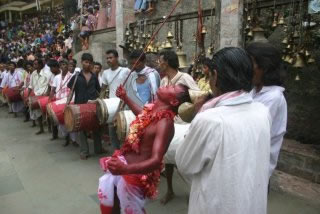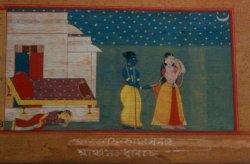Fieldwork
Kāmākhyā
texts and images by Emilie Arrago
- Representations of Speech and Human Body
- Historical Anthropology
- Vernacular Literature
- the Assamese Language
1) Representations of Speech and Human Body
The Goddess Kamakhya, "the one whose name is love" is represented by a stone moisten by water two meters underground. Her image is the women's vagina. But she appears in varied forms and her relation with devotees takes place in different context of enunciations: the Technique of Voice, the Representation of Human Body, and the Performance of Stories and Songs. This fieldwork consists in making an inventory of all the icons of the Goddess which have been brought to life through human voice, human body, fabricated objects and natural substances. The Earth as magical power ( ill . 1, 2) or the purity of a virgin girl ( ill . 3), all constitute categories to define Nature and social structures related to kinship. Icons can also be Sound and Gesture. The study of magical spells and possession's rituals ( ill .4) will also be part of this inquest. By analysing the performance of magic, it is intended to understand the porous boundary between speech and music. A collection of songs on gender relations will also be included.
|
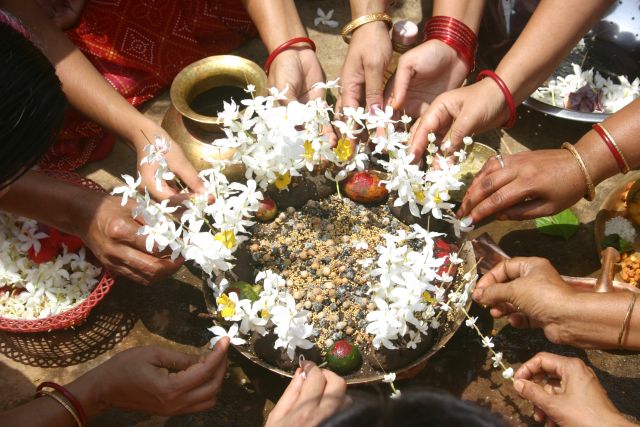 2 2 |
|---|---|
Women performing ritual before the monsoon. During seven days the Goddess is worshiped by women in the form of earth ( mati ). This ritual consists of putting some clay, drawn from a bottom of a pond, on a brass plate. Different seeds are sown on the clay. It forms the living image of the Goddess which is decorated with flowers ( juti phul ). The germination of the seeds at the end of the ritual is interpreted for the future of that year's harvest. |
|
Kumari puja. The main belief in Kamakhya is the incarnation of the Goddess through a kumari , that is, a virgin girl below 12 years old, whom the devotees worship as the Goddess. All the kumari live near the temple and have not attend their puberty.
|
Deodha's performance. Performers in trance represent living form of Siva or his spouse in their different manifestations. In Kamakhya, this shamanic dance is practiced by men but somewhere else in Assam women also do it. |
2) Historical Anthropology
In order to understand this institution it is necessary to know something of the history of the area. Although the temple of Guwahati is the most famous, the existence of other Kamakhya's temples in Assam has also to be considered in order to show how the royal strategies were employed to control the different ethnic groups.
3) Vernacular literature
The abduction of the prince or the story of Ūsā and Aniruddha
The issue at stake here is the relation between literature and ethnology. It is very significant that the romantic myth of Usa and Aniruddha, which come from the Sanskrit tradition, became progressively assimilated to Assam. The first version has been written in verses by a famous scholar in the sixteen century, Ananta Kandali, another by Pitambara and the last one by the first Assamese film director, Jyoti Prasad Agarwala, who adapted it in a play. Added to these are two painted manuscripts on aloe bark, sancipat ( ill . 5).
A Folio from the 18 th century painted manuscript on the story of Usa and Aniruddha. |
4) Assamese language
Assamese belongs to the Indo-European languages and represents 20 millions speakers or so. A manual of grammar is in preparation since 2004, as part of this project, after getting deeply involved in learning Assamese.

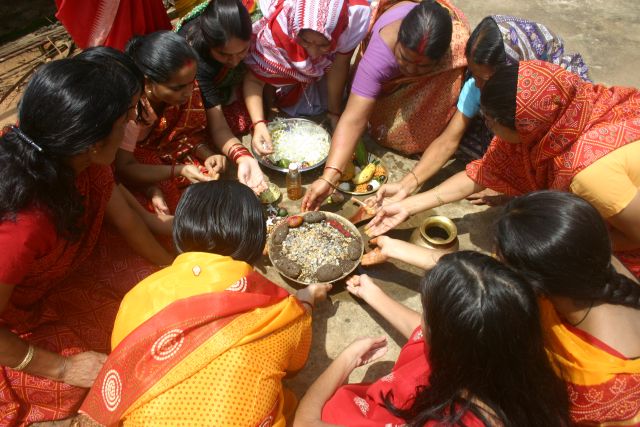
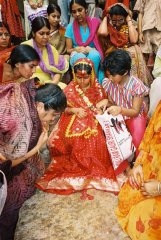 3
3 